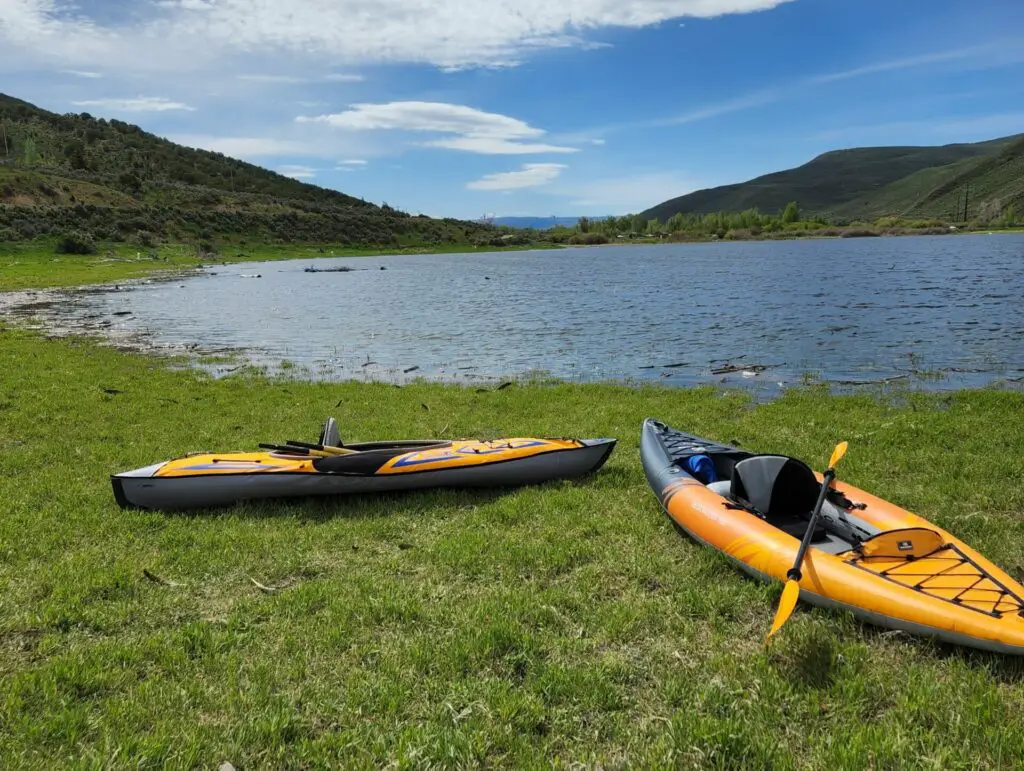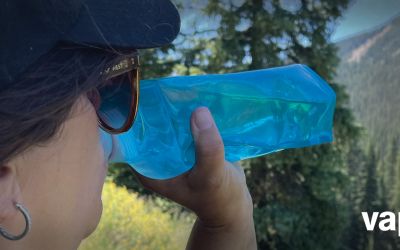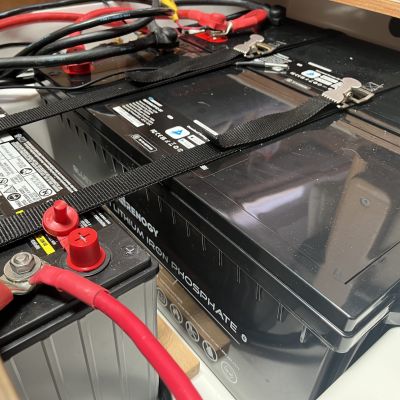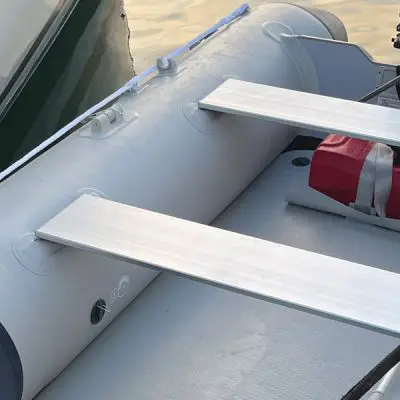The Pros and Cons of Inflatable Kayaks: Everything You Need to Know

Kayaking provides the freedom to explore the beauty of nature from the water. Whether on the ocean coastline, a mountain lake, or a forested river, kayaks give you a unique perspective of the outdoors. We’ve explored why kayaking is so much fun in the past here at Outward Spaces. From the physical and mental health benefits to the adventure experience of being immersed in nature, it’s clear that kayaking is popular for good reason.
While hard-shell kayaks have dominated the kayak space for decades, inflatable kayaks are becoming increasingly popular as a way to enjoy the water. But which type of kayak is better? We take a look at the pros and cons of inflatable kayaks and share everything you need to know to purchase the right kayak for you.
What is an inflatable kayak?

An inflatable kayak is a kayak that is made of a durable fabric that can be inflated with air. Inflatable kayaks are typically made of PVC or nylon, and they come in a variety of shapes and sizes.
Like inflatable stand-up paddleboards, inflatable kayaks have multi-layered PVC with air chambers that are carefully designed to provide buoyancy even under a significant amount of weight. The design of inflatable kayaks is similar to their rigid-hull counterparts – with the only real difference being that they are inflatable.
Inflatable kayaks are a great option for people who are looking for a portable and affordable kayak. When deflated, inflatable kayaks can be stored and transported much easier than hard shell kayaks – making them a great option for those without the space or the vehicle to handle a traditional kayak. They are also a good option for people who are new to kayaking, as they are relatively easy to maneuver.
Inflatable kayaks are portable, affordable, and durable, making them a great option for people of all ages and skill levels. However, there are also some potential drawbacks to inflatable kayaks, such as their speed and maneuverability.
In this article, we will discuss the pros and cons of inflatable kayaks in more detail. We will also provide some tips for choosing the right inflatable kayak for your needs.
What are the pros of inflatable kayaks?
There are many advantages to owning an inflatable kayak. Some of the most common pros include:
Portability
Inflatable kayaks are very portable. They can be deflated and rolled up into a small package, making them easy to transport.
Imagine that you are headed out to your favorite lake to kayak. You can strap your 10ft long hard shell kayak to the roof of your car and hope it stays put or you can simply throw your rolled-up inflatable kayak into the trunk of your car. Now imagine that once you’ve arrived at the lake, you realize that the water’s edge is further from the parking lot that you imagined. Would you rather lug a 50lb, 10ft long kayak to the shore or would you prefer to carry your 10lb inflatable kayak to the water in its carrying bag?
Inflatable kayaks also usually include a carrying bag or backpack that makes storage even easier. Finding the right storage space for hard shells kayaks 9that can be more than 10ft long) can be tricky. Storing an inflatable kayak only requires a few feet of space and being lighter, you’ll have more options of where to put it.
Affordability
Inflatable kayaks are typically more affordable than hard-shell kayaks. Entry-level hard shell kayaks start around $400 for a single kayak and more advanced versions can set you back more than $1000. Entry-level inflatable kayaks can be found for between $100-$200 and most advanced inflatable kayaks can be found in the $700-$900 range.
The quality of inflatable kayaks can vary significantly with the least expensive kayaks typically being questionable in terms of durability. When searching for the right inflatable kayak for you, try to stay away from the models that look more like toys than adventure vehicles. Some inflatable kayaks (the lower-end Intex models for example) are better suited for your backyard pool than your local paddling water.
Durability

Inflatable kayaks are made of durable materials that can surprisingly withstand a lot of wear and tear. If properly taken care of, the PVC of inflatable kayaks can last many years without developing holes. If you do find a leak in your inflatable kayak, small holes in your kayak’s PVC are simple and inexpensive to patch with a repair kit.
Don’t get us wrong here though, no inflatable kayak is as durable as a hard-shell kayak. Hard shell kayaks are built to take a beating. They are made of hard plastic materials that are difficult to break or crack no matter how hard you are on them. Most hard shell kayaks will outlive you. Inflatable kayaks will begin to break down after some years of use – especially at the seams where the PVC glue can degrade.
While inflatable kayaks aren’t as durable as hard shell kayaks, the multi-layered PVC materials they use are tougher than you’d imagine. Inflatable kayaks stand up well to abrasion and due to being air-filled, they respond well to hard knocks against the hull.
Stability
Built for speed and maneuverability, hard-shell kayaks are often unstable – especially when getting in and out of them. Due to the give of multiple air chambers, inflatable kayaks are usually much more stable, making them a good option for beginners. This increased stability is also welcomed by those who prefer to stay as dry as possible when kayaking.
Versatile
Perhaps the biggest advantage of inflatable kayaks is that they be used for a variety of activities, including fishing, touring, and recreation. Hard shell kayaks are often more purpose-built specifically for recreational paddling or serious fishing, for example. Between the small size inflatable kayaks pack up into and the extra stability they provide, they are better suited for a wider range of activities on the water.
What are the cons of inflatable kayaks?
When exploring the pros and cons of inflatable kayaks, there are also a few disadvantages to owning an inflatable kayak. Some of the most common cons include:
Speed
Inflatable kayaks are not as fast as hard-shell kayaks. The flexible air chambers, textured PVC surface, and a variety of seams of inflatable kayaks all make for a slower boat. On top of this, inflatable kayaks are often shorter than the average hard-shell kayak – causing slower top speeds.
In contrast, the surfaces of hard-shell kayaks are typically smooth, rigid, and strong. The hard plastic of the hull better cuts through the water and the waves. The longer lengths of hard shell kayaks – especially found in “touring” models – are built for speed and they respond much more efficiently when paddling.
Though inflatable kayaks aren’t as fast as hard shell kayaks, they still respond well and can be quick when paddling them efficiently. Most recreational paddlers will gladly trade a little speed for the convenience of an inflatable.
Maneuverability

Like speed, inflatable kayaks also sacrifice maneuverability compared to hard-shell kayaks. The rigid hulls of hard-shell kayaks make them more responsive to turns or changes in direction. The “give” of inflatable kayaks means that they flex more and less power generated by paddling directly transfers to the water.
Inflatable kayaks also don’t track as well as most hard-shell kayaks. Tracking means “how well it will stay moving in a straight line”. Due to increased wind resistance and the fact that most inflatable kayaks sit higher in the water, tracking can be an issue on inflatables. Many inflatable kayaks have skegs on the bottom of the hull to help the inflatable track better. If you are concerned about tracking when paddling an inflatable kayak, look for models that have larger (or even multiple) skegs.
Most paddlers won’t have any trouble maneuvering an inflatable kayak, but advanced paddlers – especially those with hard-shell experience – may be frustrated with the lack of response from an inflatable. If you plan on tackling a skills or slalom course on your local water or are planning to paddle highly technical rapids, it’s best to go with a hard-shell. In all other cases, you should be able to get to your destination without any trouble on an inflatable kayak.
Can be more difficult to paddle in windy conditions
Inflatable kayaks are light with inflated air chambers that often leave a larger boat profile to be caught by the wind. This means that inflatable kayaks can be more difficult to paddle in windy conditions than hard-shell kayaks. The loss of speed and maneuverability found in inflatables can make the feeling of being “blown by the wind” more apparent in inflatable kayaks.
Despite being blown more by the wind, in most cases, you’ll arrive at your destination just as easily as you would in a hard-shell kayak. You may expend a few more calories by having to paddle harder than you would have had to in a hard-shell kayak, but for most kayakers, the overall convenience of an inflatable kayak is well worth it.
Won’t last as long as a hard-shell
Hard shell kayaks are designed of hard plastic and are meant to endure years of exposure to the sun and water. Their rigid hulls are more resilient against hard bumps against rocks or punctures from sharp objects.
Most hard shell kayaks are floating tanks – they will take a beating being drug across shorelines and shallow, rocky water and will continue to do their thing. But this durability comes at the cost of increased weight and a hull that can be folded, packed away, or stored in small spaces.
Inflatable kayaks, on the other hand, will puncture and leak when exposed to sharp objects. While leaks do happen on inflatable kayaks, having multiple air chambers will keep the kayak afloat allowing you to return home safely. Leaks and punctures can usually be patched and repaired easily within minutes.To increase the life of an inflatable kayak, keep in out of the sun when not in use. It’s best to deflate and pack away inflatable kayaks after each use. This “packing away” will prevent the seams from being stressed during temperature changes, protect the PVC fabric from harmful UV rays, and keep it ready to go for your next adventure.
The Bottom Line
After weighing the pros and cons of inflatable kayaks, inflatable kayaks are a great option for people who are looking for a portable, affordable, and durable kayak. However, they are not as fast, maneuverable, or as durable as hard-shell kayaks.
When choosing an inflatable kayak, it is important to consider the type of water you will be paddling in, the size of the kayak, and the number of people who will be using it. See our recommendations below to find the inflatable kayak that best fits your needs.
Inflatable kayaks can be used for a variety of activities, including fishing, touring, and recreation. By far, the largest advantage of an inflatable kayak is convenience. Inflatable kayaks can be deflated and packed away needing less storage space and making them easy to transport in any vehicle. While some performance is sacrificed when choosing an inflatable kayak, easier storage and transport to and from the water will have you paddling more often.
There are many shapes and sizes of inflatable kayaks available on the market. To find the right inflatable kayak for your needs, we encourage you to go beyond our list of the pros and cons of inflatable kayaks and research models for yourself.
Happy Paddling!













Leave a Reply